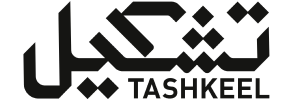On Future Memory – Access I: Tulip Hazbar
٢٨ يونيو ٢٠١٦
Tulip Hazbar writes on the development of her work in Kobe and her project Future Memory – Access I:
Can you tell us a little about the work you are developing whilst in residence in Kobe?
I have always been interested in new communities that form away from their original home. Knowing that the largest Japanese diaspora percentage is in Brazil and keeping in mind that the residency will be in Kobe city, Japan. I thought there was an opportunity there I could explore.
Before getting to Kobe, and after learning about the history of the building we have been working from, I thought it would be a good idea to start the residency with reviving a project I started back in 2014 when I visited Brazil. The project was formal studies on colour and food/candy packages design. The intention was to pair these objects with similar Japanese objects and create the Japanese-Brazilian product as a representation of the Japanese-Brazilian community. These formal studies were helpful at the beginning and started feeding the bigger idea very positively.
Aside from these formal studies, I wanted to explore the Japanese-Brazilian move and the memories it inflicted on the Brazilians with Japanese roots who are now back in Kobe. I gave myself the time to research and learn more about the Japanese-Brazilian community through reading texts on the topic, visiting the museum in the Kobe Centre of Immigration and culture exchange and interviewing individuals from the CBK (Comunidade Brasileira de Kansai). I had the chance to explore the topics of future, time, collective memory as well. Looking at the individual and collective memories from the move, I was trying to predict the future of Syrians who left home looking for a safe life in other places. Pairing the two situations is completely based on human experience and behaviour when it comes to settling down, adapting to new places and struggling in the process. Based on that I was able to draw parallels between the two situations and propose how Syrians might engage with memory in the years to come and how this intangible and universal human capacity may play a role in coping mechanisms for mass trauma.
Future Memory – Access I was the first in a series of investigations into the specificity of memory and the processes that define our ownership and access to memories. The project will continue to seek to uncover and draw on the agitation of personal and collective community memory provoked by instances of migration, evacuation and sites of conflict or trauma.

Is this an ongoing project or something initiated recently?
This will definitely be an ongoing project. It ties in perfectly with previous projects and constant investigations about home and memories.
Will you continue to explore these same subjects when back in Dubai and if so, how do you foresee these developing?
I will continue working with the same subjects while in Dubai, I will try to refine the research and presentation into a more cohesive experience.
As for now, I have created an installation that played the role of a future memory portal (or access point) where the viewer is led through a set of unfamiliar performative actions that are meant to trigger immediate engagement and implicit disorientation to prepare for the “future memory”.
The installation was accompanied with a set of zines that allow the viewer to take a closer look into the research process: the readings, interviews, visuals and build-up process.
The development of this project is what I’m currently having conversations about here in Kobe and planning!
